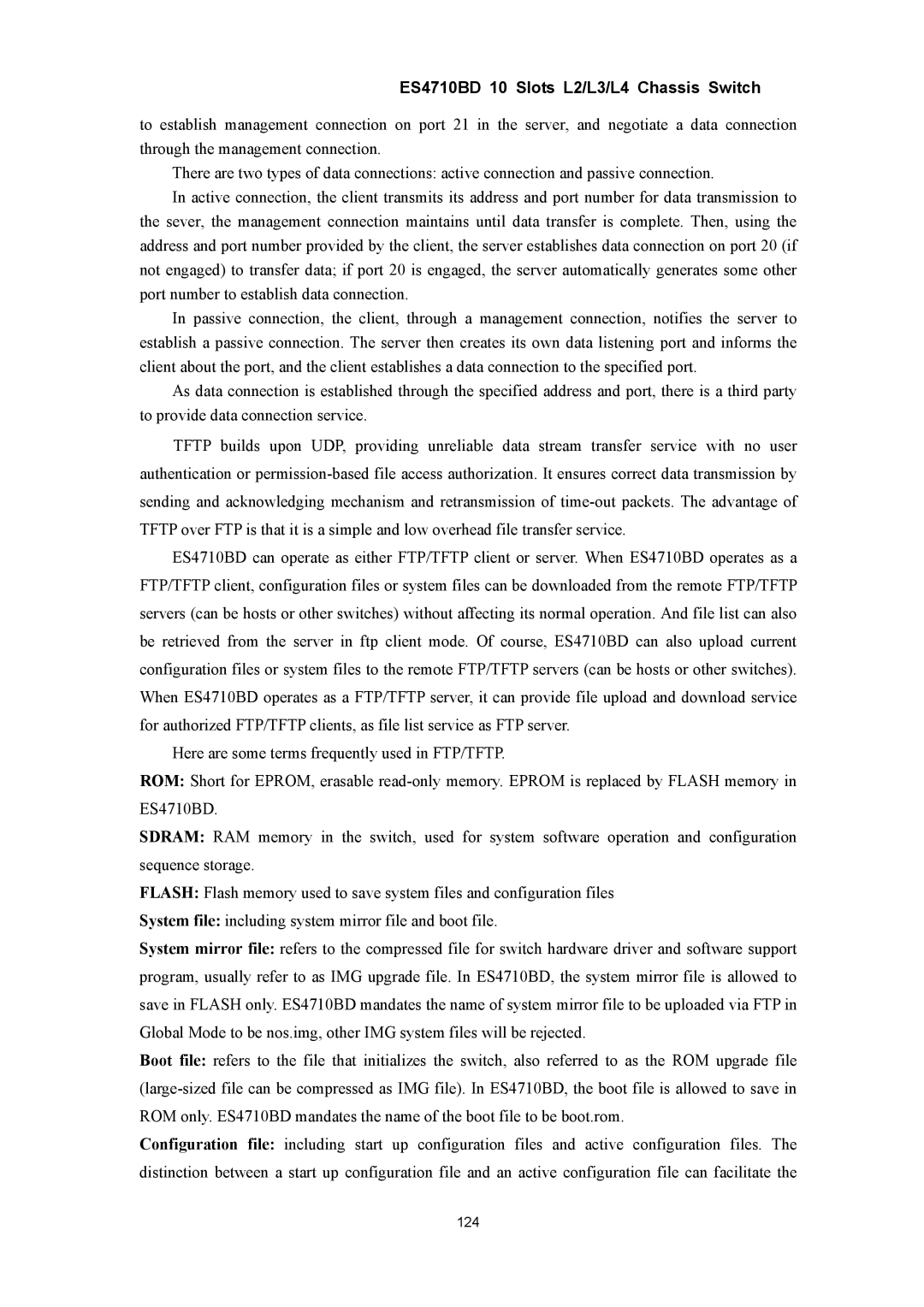ES4710BD 10 Slots L2/L3/L4 Chassis Switch
to establish management connection on port 21 in the server, and negotiate a data connection through the management connection.
There are two types of data connections: active connection and passive connection.
In active connection, the client transmits its address and port number for data transmission to the sever, the management connection maintains until data transfer is complete. Then, using the address and port number provided by the client, the server establishes data connection on port 20 (if not engaged) to transfer data; if port 20 is engaged, the server automatically generates some other port number to establish data connection.
In passive connection, the client, through a management connection, notifies the server to establish a passive connection. The server then creates its own data listening port and informs the client about the port, and the client establishes a data connection to the specified port.
As data connection is established through the specified address and port, there is a third party to provide data connection service.
TFTP builds upon UDP, providing unreliable data stream transfer service with no user authentication or
ES4710BD can operate as either FTP/TFTP client or server. When ES4710BD operates as a FTP/TFTP client, configuration files or system files can be downloaded from the remote FTP/TFTP servers (can be hosts or other switches) without affecting its normal operation. And file list can also be retrieved from the server in ftp client mode. Of course, ES4710BD can also upload current configuration files or system files to the remote FTP/TFTP servers (can be hosts or other switches). When ES4710BD operates as a FTP/TFTP server, it can provide file upload and download service for authorized FTP/TFTP clients, as file list service as FTP server.
Here are some terms frequently used in FTP/TFTP.
ROM: Short for EPROM, erasable
SDRAM: RAM memory in the switch, used for system software operation and configuration sequence storage.
FLASH: Flash memory used to save system files and configuration files
System file: including system mirror file and boot file.
System mirror file: refers to the compressed file for switch hardware driver and software support program, usually refer to as IMG upgrade file. In ES4710BD, the system mirror file is allowed to save in FLASH only. ES4710BD mandates the name of system mirror file to be uploaded via FTP in Global Mode to be nos.img, other IMG system files will be rejected.
Boot file: refers to the file that initializes the switch, also referred to as the ROM upgrade file
Configuration file: including start up configuration files and active configuration files. The distinction between a start up configuration file and an active configuration file can facilitate the
